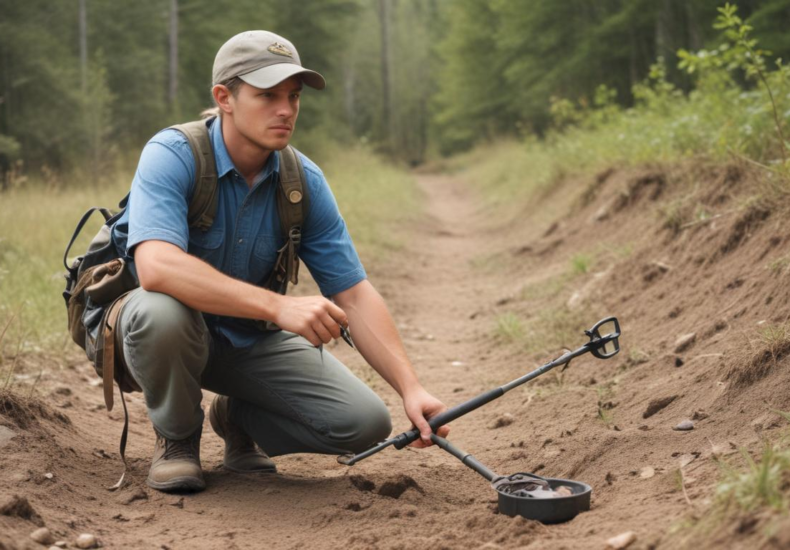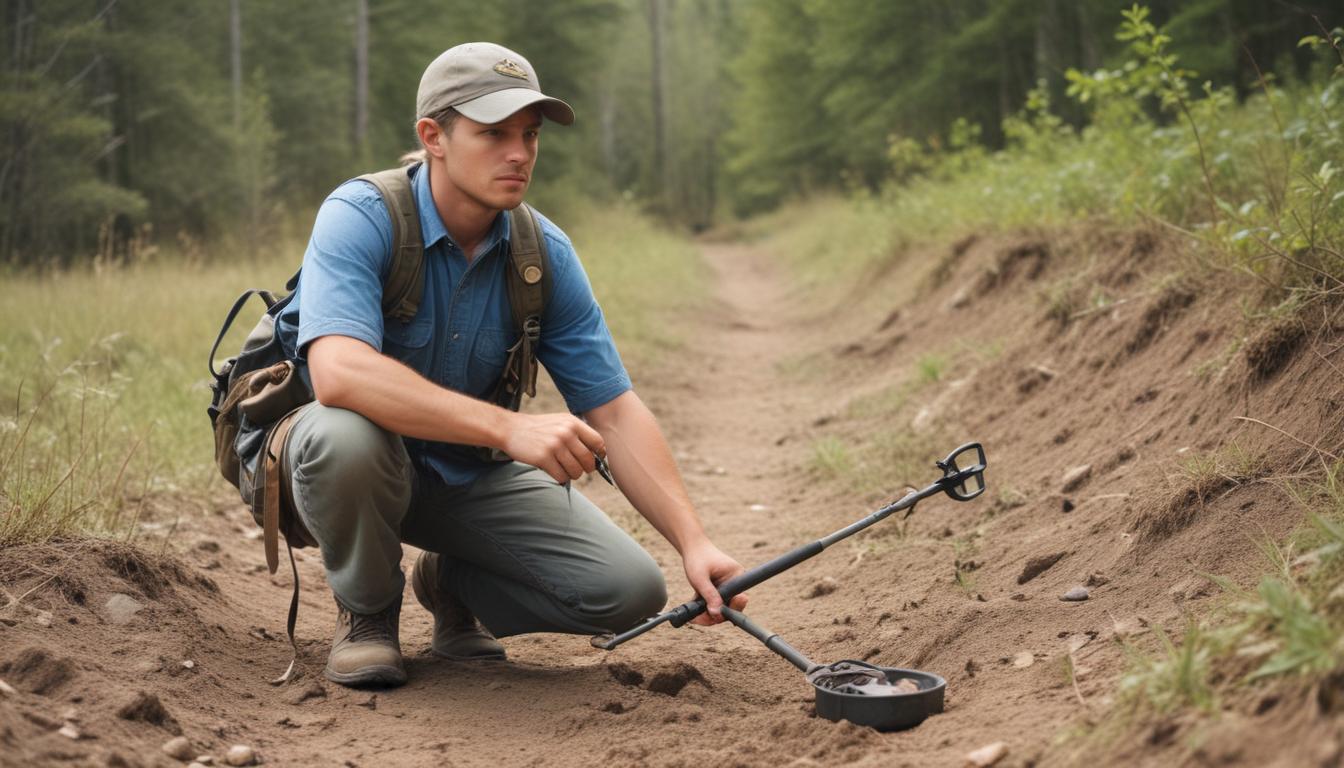
Hidden dangers of metal detecting in remote areas
Metal detecting in remote areas appeals to many for its promise of adventure and the potential to uncover hidden treasures. However, the activity isn’t free from environmental risks which can have long-term effects both on the landscape and the ecosystem. One of the primary concerns is the disturbance of the soil. Metal detecting often involves digging and excavation to retrieve detected items. This disturbance can lead to soil erosion, particularly in remote, untouched areas where the soil might be loose and more susceptible to erosion processes. Frequent digging disrupts the soil structure and can harm root systems of vegetation, thereby affecting plant life and contributing to further soil degradation.
Another risk involves the potential for harm to wildlife. Remote areas are often habitats for various species, some of which might be endangered or sensitive to disturbances. The noise and physical presence of metal detectors can interfere with natural animal behaviors, causing stress or displacement. Moreover, the holes left by treasure hunters may become traps for small animals, which can fall in and become unable to escape. This not only affects the local fauna but can disrupt the food chain and overall biodiversity of the region.
Additionally, improper disposal of waste represents a significant ecological risk associated with remote hunting. Individuals venturing into areas for metal detecting may inadvertently leave behind trash such as non-biodegradable materials, snack packaging, or even batteries, which can leach harmful chemicals into the soil and water systems. The remoteness of some metal detecting sites can make formal cleanup efforts challenging, thereby exacerbating the issue and leading to more pronounced environmental impacts over time.
While the hobby of metal detecting can be enriching and enjoyable, it is crucial for enthusiasts to practice environmentally conscious behaviors. This includes adhering to “Leave No Trace” principles, ensuring all holes and disturbances are restored as nearly as possible to their original state, and carrying out all trash or debris accrued during the search. By incorporating these practices, metal detecting can be enjoyed responsibly, minimizing the environmental risks and preserving the pristine nature of remote areas for future generations.
Personal safety challenges
Exploring remote areas for metal detecting can be filled with unforeseen personal safety challenges. These risks can range from minor injuries to severe health and safety threats, depending on the terrain and isolation of the location. One primary concern is the risk of physical injury. Uneven ground, hidden holes, and natural obstacles like rocks or fallen branches can pose significant risks, especially when the metal detector’s gaze is fixed on the ground. Falls and sprained ankles or wrists are common, and without immediate access to medical services, such injuries can result in severe complications.
Beyond the immediate physical dangers, the isolation of remote hunting areas can exacerbate any situation. If a metal detectorist gets injured or falls ill, the distance from medical facilities can turn a manageable situation into a critical one. Coupled with typically unreliable or non-existent mobile phone coverage, seeking help can become a complex challenge. Additionally, weather conditions in remote areas can change swiftly and unpredictably, exposing the enthusiast to risks of hypothermia, heatstroke, or severe weather events such as storms or floods, which can quickly become life-threatening.
Wildlife encounters also represent a significant risk factor while metal detecting in secluded locations. Remote areas often serve as habitats for various wildlife, including potentially dangerous animals. Snakes, bears, and mountain lions, depending on the region, may pose a threat if startled or threatened. Therefore, metal detectorists need to be aware of the local wildlife and knowledgeable about how to handle encounters calmly and safely. This knowledge is crucial not only for the safety of the individual but also for the protection of the wildlife that calls these areas home.
Preparation is a critical component of ensuring safety during these excursions. Metal detecting enthusiasts should plan their trips thoroughly, notify someone of their whereabouts, and estimated return time. Carrying a basic first aid kit, sufficient water, and food, as well as emergency shelter and a method for signalling help, such as a whistle or a mirror, can also mitigate the risks associated with remote metal detecting. Integrating these precautions will enhance metal detecting safety, promoting a safer and more enjoyable experience even in the most secluded of locales.
Legal implications and restrictions
The allure of unearthing hidden treasures through metal detecting also brings with it a myriad of legal implications and restrictions that enthusiasts must navigate, especially when venturing into remote and potentially historically significant areas. It’s crucial for metal detectorists to understand that different regions—be it within the same country or internationally—may have varying regulations governing the detection and extraction of objects from the land.
Primarily, many jurisdictions require a permit or explicit permission from the landowner before conducting any form of metal detecting. This requirement is a safeguard to prevent any legal disputes or trespassing claims that might arise. The process of obtaining a permit might involve specifying the type of equipment used, the exact locations intended for exploration, and agreeing to report or relinquish any finds of significant historical or cultural value to the relevant authorities.
In certain areas, particularly those known for their archaeological significance, metal detecting might be outright banned or restricted to specific zones. These regulations are in place to protect the historical integrity of the site and to ensure that valuable artifacts are professionally handled and preserved. Violation of these laws not only poses risks of hefty fines for the individual involved but also the potential for more severe legal consequences, including jail time depending on the gravity of the offense.
Besides respecting ownership and protected sites, remote hunters must also be aware of any cultural sensitivities associated with the land they are exploring. Some grounds may be sacred or historically significant to indigenous communities or local populations. Detecting in these areas without proper consultation and agreement can lead to ethical violations and profound disrespect towards the cultural heritage of the community.
Metal detecting is not merely a casual hobby but also one that carries significant responsibility towards cultural preservation and legal adherence. For those passionate about exploring remote locations, it’s not only about recognizing the risks but also about ensuring that their pursuit does not inadvertently lead to legal infractions or cultural insensitivity. Comprehensive knowledge and compliance with the relevant laws and guidelines are essential for maintaining the integrity and joy of metal detecting as a hobby.
Impact on historical sites

The practice of metal detecting, while often rewarding, can have profound effects on historical sites, especially when conducted in remote or archaeologically rich areas. The excavation required to retrieve metal objects can inadvertently damage the very fabric of historical contexts that researchers rely on to understand past human activities. When layers of soil are disturbed or removed, the stratigraphy—or layering—of an archaeological site can be disrupted. This stratigraphy is crucial for dating techniques and understanding the historical timeline of human activity at a site.
Beyond the physical disturbance, the removal of artifacts can rob historians and archaeologists of invaluable insights into past civilizations. Each artifact removed from its resting place without proper documentation and preservation can represent a lost piece of history. This is particularly significant in areas that have not yet been studied by professionals, where every item could potentially provide critical insights into regional histories and cultural practices.
Risks of damaging historically significant sites increase in regions known for their ancient settlements or battlefields. Here, remote hunting for relics with metal detectors can lead to the unreported discovery and removal of items that might have significant historical, cultural, or even monetary value. This loss not only diminishes our collective heritage but also contravenes laws designed to protect these irreplaceable resources.
Moreover, unauthorized metal detecting at historical sites can lead to tensions with local communities and historians. It is not uncommon for communities to view such acts as an invasion of their cultural heritage. In response, various jurisdictions have imposed stringent regulations and impose serious penalties for those caught metal detecting in protected zones without permission. This protective stance is vital to preserving historical sites for professional investigation and future generations.
For enthusiasts of this hobby, understanding and respecting the historical impact of their activities is crucial. Aligning with best practices for metal detecting safety and adhering to local laws can help mitigate these risks. It is imperative for detectorists to educate themselves about the potential historical significance of the areas they plan to explore and to obtain all necessary permissions. By fostering a responsible metal detecting community, individuals can enjoy their pursuit without contributing to the degradation of our shared heritage.
Essential safety gear and precautions
When engaging in metal detecting, especially in remote locales, being inadequately prepared can pose serious risks to your safety. It’s imperative to equip yourself with essential safety gear and adhere to specific precautions to ensure a safe and successful outing. Key items for your safety arsenal should include protective clothing, a sturdy pair of gloves, and footwear appropriate for the terrain. The gloves will protect your hands from sharp objects and potential irritants while digging, and suitable footwear will help prevent foot injuries and provide the necessary grip and support on potentially uneven surfaces.
A reliable metal detector is, of course, central to your equipment, but supplementary gadgets can significantly enhance your safety and efficiency. A GPS device or a reliable map and compass are essential for navigation, especially since mobile signals are often weak or nonexistent in remote areas. This technology will assist you in maintaining your bearings and help avoid getting lost, which is a common risk during remote hunting.
In addition to navigational aids, carrying a basic survival kit is advisable. This kit should include items such as a flashlight, extra batteries, a multi-tool, and a fire-starting mechanism. Depending on the weather conditions and duration of your trip, additional layers of clothing, rain gear, and a thermal blanket may also be necessary to guard against hypothermia or other weather-related issues.
Moreover, ensuring that all holes and disturbances created during your search are properly refilled is an important aspect of metal detecting safety. This not only prevents injuries to others and wildlife but also minimizes environmental impact, helping to preserve the natural state of the location. A portable first aid kit should also be a constant in your gear, equipped to handle minor injuries such as cuts, scrapes, or sprains that might occur while out in the field.
Always inform someone of your plans before heading out. Provide details such as your exact location, expected return time, and routes you plan to explore. In cases of emergency, this information could prove vital in directing search and rescue efforts. Adhering strictly to these precautions and being well-prepared with the appropriate gear will greatly reduce the risks associated with metal detecting in remote areas, allowing you to focus on the enjoyment and thrill of your adventure.
You may also like
Archives
Calendar
| M | T | W | T | F | S | S |
|---|---|---|---|---|---|---|
| 1 | 2 | |||||
| 3 | 4 | 5 | 6 | 7 | 8 | 9 |
| 10 | 11 | 12 | 13 | 14 | 15 | 16 |
| 17 | 18 | 19 | 20 | 21 | 22 | 23 |
| 24 | 25 | 26 | 27 | 28 | 29 | 30 |
Leave a Reply